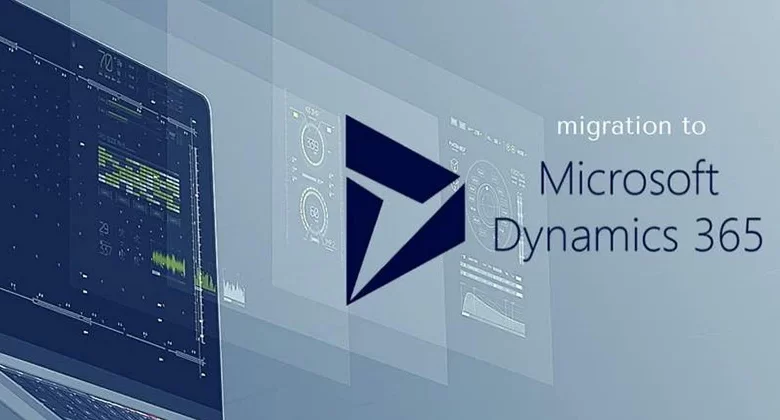Microsoft Dynamics AX to Dynamics 365: It is time for an ERP Upgrade!

Enterprises tend to resist change, primarily when switching the existing Enterprise Resource Planning or ERP system. The reasons could be that the solution is working fine, or upgrades might be heavy on budgets and time consuming – pushing businesses to skip the upgrade.
Continue using on- premise Microsoft Dynamics AX would not be the right choice. While committing the time and resources critical for an upgrade can be a task, any further delay in moving to a cloud- based Microsoft Dynamics 365 (or D365) would affect businesses’ competitive edge and limit their ability to transform digitally. Therefore, with support already ending for Dynamics AX soon, Dynamics 365 would be the best option for ERP upgrade.
Here we share everything you need to know about transforming from Microsoft Dynamics AX to Dynamics 365, including how the two solutions are different, the benefits of opting for D365, and the available migration options.
The Dynamics of Differences
Introduced in 2002, Microsoft Dynamics AX aimed to meet the ERP requirements of mid- to- large size enterprises. Dynamics AX has gradually evolved into a future- ready solution, Dynamics 365. Moreover, Dynamics AX is no longer available for new customers, as Microsoft ended supporting the application in 2021.
Dynamics 365 is much more than just a name change, as the benefits D365 offers would far outweigh its predecessor. The primary difference between Dynamics AX and Dynamics 365 is the infrastructure. Dynamics AX is primarily an on- premise hosted solution, while Dynamics 365 is cloud- based platform that leverages Artificial Intelligence (or AI) and Machine Learning (or ML) capabilities with advanced automations and enhanced reporting features.
D365 model offers much more than Dynamics AX in terms of accessibility and functionality, including web- based login; sleek, user-friendly interface; extensive integrations; regular updates; and new dynamics features. Besides, Dynamics AX upgrade to D365 is more than just porting the old system to new configurations and more than worth the investment.
The Benefits Unlocked
We will now deep- dive to explore the benefits of migrating from Dynamics AX to D365.
- Cost Reduction: Moving from the Dynamics AX to D365 helps reduce spending on multiple fronts. Including minimum hardware costs, least labor spends, and zero investments in servers, server maintenance, or database admin.
- Ease of Management: D365 enables organizations to focus on the core tasks they do best—which certainly do not include configuring ERPs, managing hardware, or developing support processes. Instead, application lifecycle management is much easier and more cost efficient.
- Business Continuity: Microsoft ensures business continuity and disaster recovery for D365 solutions, thus ensuring enterprises’ systems stay constantly up and running, even during outbreaks like COVID or other natural disasters.
- Customizations/ Integrations: Unlike Dynamics AX, D365 includes various smart tools for seamless migration of data and customized codes, along with developing new ones. Besides, next- level configurations, setup wizards, and more allow enterprises to leverage innovative features for unique business needs.
- Availability: Browser- based D365 works anytime, anywhere, and on any device without worrying about the costs of setup, maintenance, and security like in most on- premise infrastructures, including Dynamics AX.
- Power Platform: Seamless integrations with the Power Platform, D365 allows organizations to access business data from anywhere with Power BI, leveraging interactive visualizations and charts while allowing users to build custom apps, workflows, automations, and take advantage of the intelligent Microsoft cloud.
- Security: D365 provides a secure, in- cloud environment with assured information privacy and data integrity for cross- team collaborations, even for remotely located colleagues.
- Upgrades/ Updates: D365 offers budget- friendly, automatic upgrades, ensuring the system stays updated always.
The Migration Options
Here we would discuss a couple of migration options:
- Existing Solution: Users need first update the existing application to the latest version before initiating the complete migration process. D365 migration is relatively straightforward for Dynamics AX versions 2012 or later. Businesses, however, would need an entirely new implementation for the existing older versions like Dynamics AX 4.0 or 2009.
- Customized D365 Migration: Businesses looking to migrate along with the existing customizations/ reports would depend on the age of the current solution in use. For an old version with customizations/ workarounds, users probably need to assess and identify what to keep or leave. Most businesses, however, would choose a new implementation for a fresh, clean start and avoid any migrating concerns from the past.
Expert Technology Partner for Help
Experts at Dynamics Square follow a proven process based on years of experience and have gained numerous unique migrations. Leverage D365’s powerful feature suite for short- term transformation goals and future growth.
Let us engage Today!
Read: 5 Sure-Fire Ways A Professional SEO Agency Can Find Niche SEO Optimized Blog Topics




